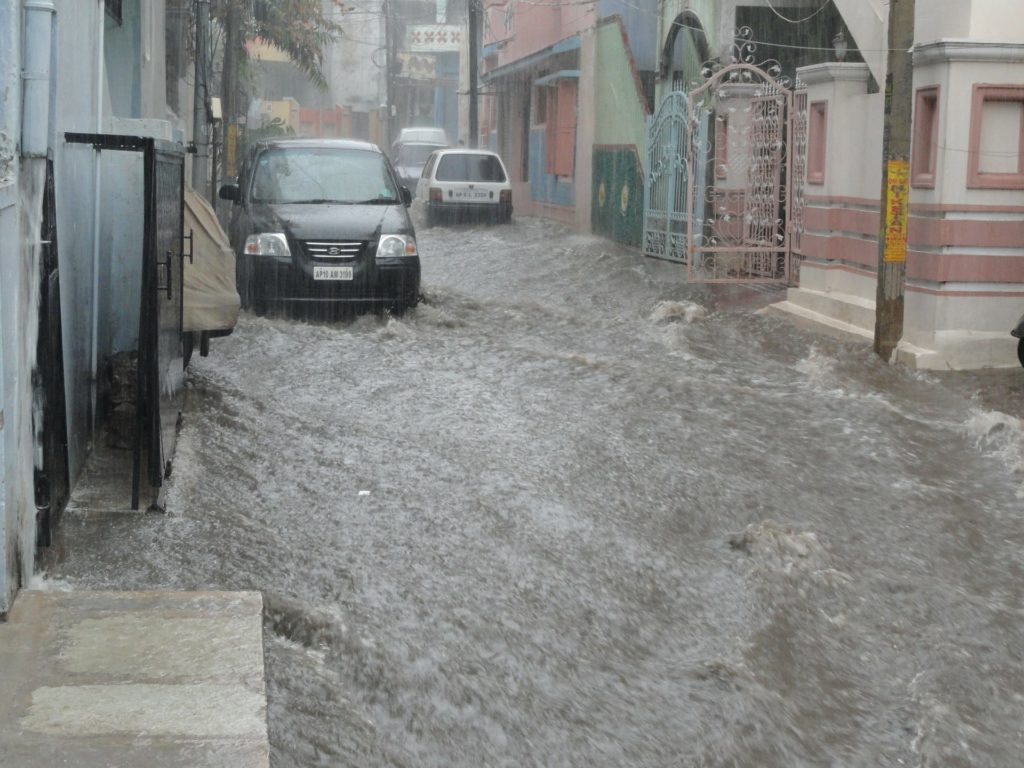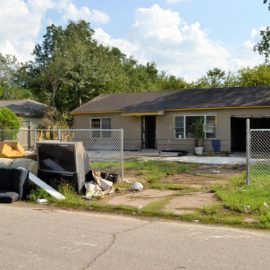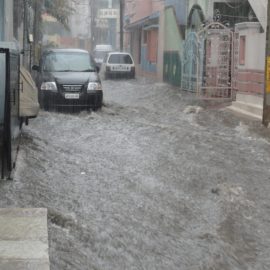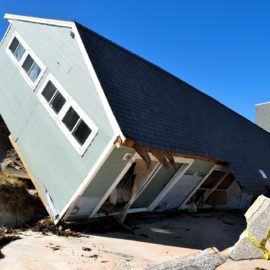
Flooding is bad but that is why we have the insurance. The new rates threaten to drive some out of their homes but this is made worse by a lack of understanding how they were derived.
Try this word game, but a couple of disclaimers first: It’s not supposed to be fun, and it could have a severe effect on your property value. “In general, the analysis approach for leveed areas was similar to that for non-leveed areas, however the leveed area analysis relied solely on KatRisk and MDI because it was not possible to adjust the AIR and CoreLogic models based on the USACE analysis described above.” OK, it’s not exactly a word game. It’s part of FEMA’s head-spinning explanation of how rates are being set under the biggest shake-up of the nation’s flood insurance program since it was created in the 1960s. Few understand how the new rates that began taking effect on Friday are being calculated. But there are fears that the fallout in Louisiana, as one congressman puts it, could be something like a “trail of tears,” referring to the forced displacement of Native Americans in the 19th century.
theadvocate.com
KatRisk, MDI, CoreLogic and USACE. Where is google when I need it! Acronyms are not needed when describing the process to the citizenry. This is especially true when so many have to have it.
Louisiana has the highest participation rate in the flood insurance program of any state: Though less than 2% of Americans live here, 10% of policyholders in the National Flood Insurance Program call Louisiana home. The bulk are in the state’s south. The new system will mean steep increases for many of them, but the issue has received little attention and the complex new model to set rates is inscrutable. The state’s congressional delegation and local officials are warning of the potential for a crisis in south Louisiana. “Let’s protect people rather than just gouge them or force a new trail of tears because you’re giving people the false choice of paying completely unaffordable rates,” said U.S. Rep. Garret Graves, R-Baton Rouge, who has been seeking to halt the increases expected under the overhaul. “And really, the only option at that point is making them abandon their home, abandon their community.”
Is it really that bad. I know I pay more car insurance here than when we were in Virginia. So I guess I need to pay for flood insurance as well but I did not need it in Virginia,
It’s difficult to overstate the changes taking place. For critics of the program who have long been seeking to slow construction in scenic but risky waterfront areas, they’re a good thing and long overdue. But, as has so often been the case, south Louisiana and its working coast may end up being an exception to the rule. If doomsday predictions prove accurate, parts of the housing market could be transformed. First-time homebuyers and working-class families may end up being hit hard in this part of the country, where water is never far away. What’s happening is known as Risk Rating 2.0. FEMA, which oversees the program, says it will be fairer for everyone by more accurately pricing the risk of individual properties. In other words, no more artificially low rates for pricey vacation homes in chic coastal getaways. Older, modest homes are supposed to get a fair shake. And the NFIP, in debt to the tune of more than $20 billion, will finally be on a path to solvency. That’s the plan, anyway. But while that may be true for much of the country, many Louisianans fear they will wind up as bycatch in the trawl net. That’s because of some of the factors being used to set the new rates and the simple realities of living in this former swamp.
If I lived on the water front I would understand but just because I am at sea level here?
Louisiana has the nation’s highest participation rate in the NFIP, thanks to its low-lying topography and the ubiquity of water here. And while Hurricane Katrina accounts for a giant chunk of the NFIP’s debt, many have pointed out why that is not Louisiana’s fault. Katrina led to more than $16 billion in paid claims because the federal government’s shoddily built levees failed. Adding insult to potential injury is the new model itself. Because of the complicated algorithm being used to set rates and the lack of available information, breaking down how the new premiums are being calculated is essentially impossible. “I’m not trying to say there’s a conspiracy behind this,” said Ross Shales, a consultant with Metairie-based Expert Insurance Services who trains real estate agents on the new system. “But I would say that we have a situation where most of the rest of the country is not going to care about the hidden numbers. But we’re going to care a lot because we’re sitting there like, ‘Why are so many people’s premiums going up?’ We need the details. They haven’t been forthright.” The full impact of the change will take time to become apparent — perhaps years. The new rates began to take effect for Louisiana’s 500,000 existing policyholders on Friday, but increases are limited to 18% per year. Policyholders will begin seeing the change with their next renewal, starting April 1.
Of course, there will be 18% increases until the whole bill is paid, as the cost goes up every year. How many 18% increases can I take as in 5 years it is close to a 100% increase.
Increases will occur annually at that 18% rate until homeowners reach their target premiums — and those compounded figures will add up to big totals for many. FEMA has only released estimates for increases and decreases for the first year of the new system, masking the full impact. The limited information released so far allows for some rough estimates. Using that data, around half of Louisiana policyholders can expect to see increases of at least 129%, phased in over multiple years. About one in 10 will see increases of more than 400%. About 20% will see decreases. Those decreases will occur in the first year only.
As homeowners we are either burring our heads in the sand or we don’t realize the impact, and the day we get the next bill will wake us up.
Local leaders have been seeking to draw attention to the issue, but have had difficulty gaining traction. Parish presidents from throughout the New Orleans metro area joined together Tuesday to issue a unified plea, warning that some communities could be devastated by the changes. Jefferson Parish President Cynthia Lee Sheng said “people don’t realize what’s about to happen to them.” St. Bernard Parish President Guy McInnis called the changes “stupidity.” The state’s congressional delegation has also been seeking to stop the changes. Graves has proposed amendments in the past and on Friday announced legislation that would allow policyholders to stick with their old rates while FEMA provides more information. State Rep. Troy Carter, D-New Orleans, is among the co-sponsors. Sens. Bill Cassidy and John Kennedy have introduced similar legislation. Cassidy has also co-sponsored a comprehensive bill that would institute sweeping reforms to the NFIP. But it will likely take a much bigger coalition before such legislation can gain momentum. Local officials are hoping to see a replay of 2012’s Biggert-Waters Act, which also sought to drastically overhaul NFIP rates. Another law was eventually passed to repeal parts of it.
The usual three plus one are working for us, what of the others in congress? We can see the general outline f the rates but not the specifics.
The outlines of how the new rates are being set are clear, but the calculations are not. Rather than set rates based on a system of flood zone maps as in the past, Risk Rating 2.0 factors in characteristics of each property. That means a range of criteria, including distance from water, elevation, construction type and rebuilding costs. Some criteria rely on databases that inform the calculation, such as levee quality. Those criteria are fed into an algorithm that spits back a price. Peter Perkins, a Massachusetts agent with Peter Briggs Insurance Agency who has closely followed the changes, said he agrees that FEMA’s overall approach in the new system is sound since the aim is to accurately price risk. Massachusetts may end up being the opposite of Louisiana. That coastal state tended to have relatively high premium costs in the old system, and is seeing some substantial decreases so far in the new one, said Perkins. But he notes potential pitfalls, including the inaccessibility of the calculations behind the premium costs. He says there will almost surely be errors, but FEMA is asking that policyholders simply trust them on the numbers. “It actually is impossible to reconstruct the rates,” said Perkins, who points out that some of the data being used is not public. “There’s pieces of the equation that are missing.”
New policies don’t bet the 18% break so if you sell a house then next owner gets a real hit. Will that make it harder to sell or just mean the price is dropped.
New policies began to be priced under Risk Rating 2.0 beginning in October, and those are not subject to the 18% limit. There have been numerous examples of skyrocketing rates in south Louisiana. Larry Kornman, head of local homebuilder Sunrise Homes, said his company was seeing policies jump from $650 per year to around $3,500 for houses in the $250,000 to $500,000 range. He worries that the new system will not accurately account for taxpayer-funded drainage and flood protection improvements. “It will disqualify some people from being able to buy a home just because they’re not going to have that cash,” said Kornman. He, like others, questions whether many living in zones where flood insurance is not required will simply drop coverage. An internal FEMA study has estimated that nearly 20% of policyholders could do so over a decade, but FEMA says it used “pessimistic assumptions” and actually expects enrollment to increase. Graves said the federal government should be investing more in coastal protection and flood control rather than increasing rates in a part of the country that cannot afford it. When mentioning the possibility of a “trail of tears,” he said he didn’t want to appear “overly dramatic,” but the risk of homeowners being forced to move was real. “Is this a scenario where you’re going to have government come in and forcibly remove you from your home and say ‘you’re out of here,’ like Trail of Tears? No, but are the impacts or the implications going to be similar? Yes, because of the compounding impact,” Graves said. “Effectively, it leaves you with a false choice of staying or leaving. And the reality is that you’re not going to be able to afford to live in these communities.”
When mine go up I will say when was the last time I flooded.. If I stay dry why the increase? I will not be alone in this thinking.



